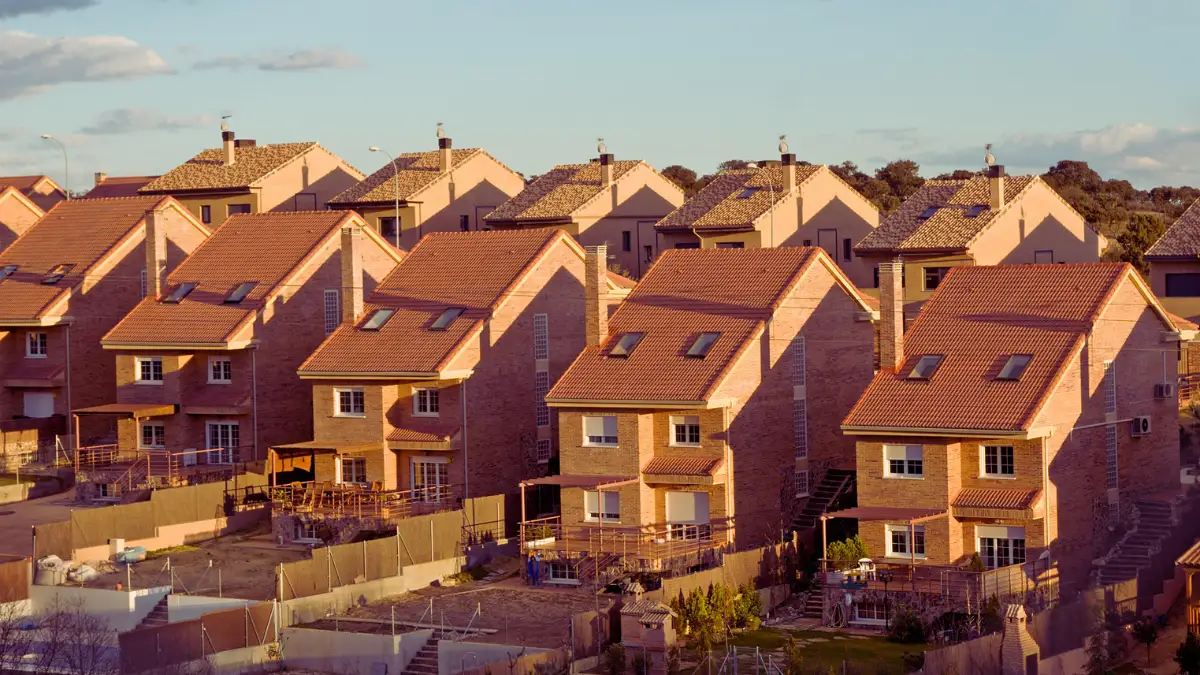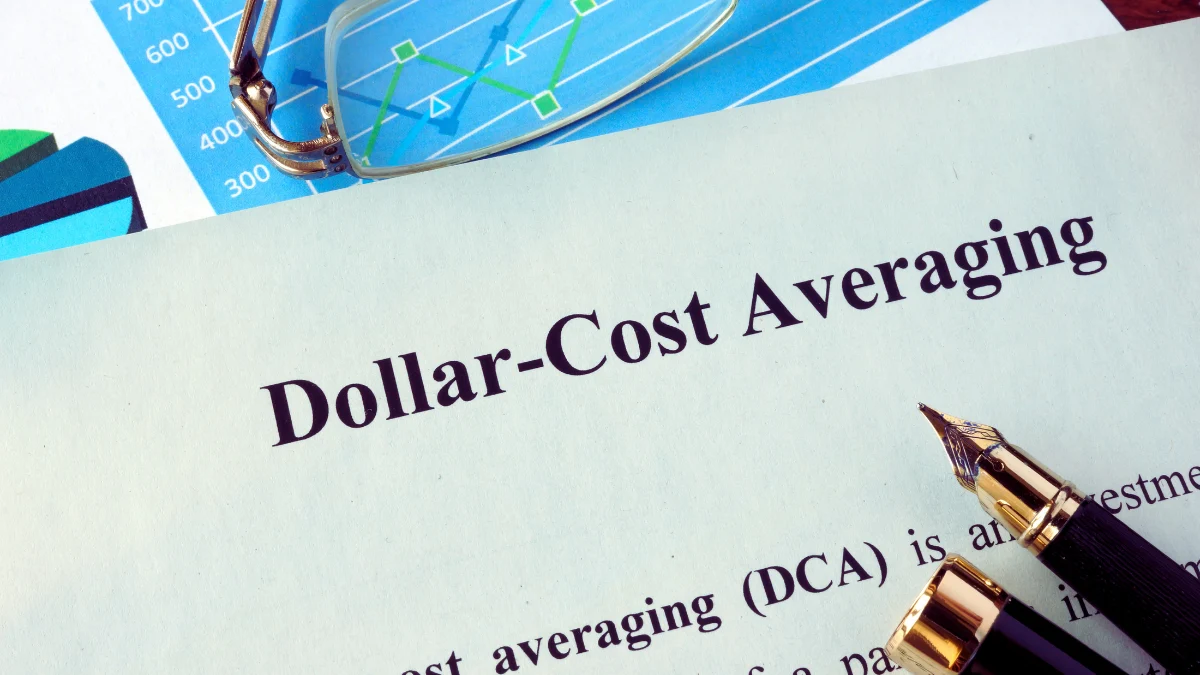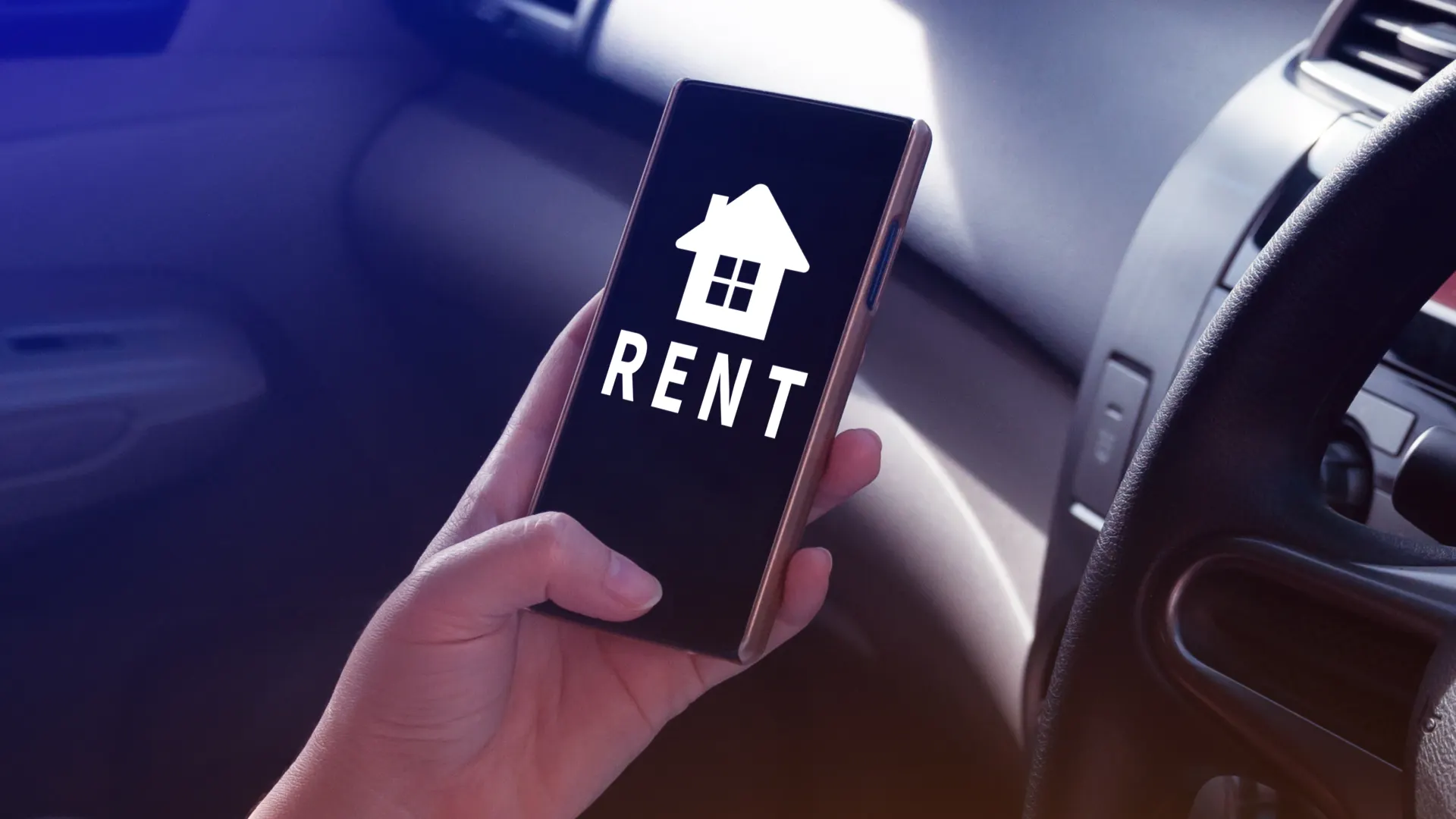You see it everywhere. Instagram posts showing luxury cars. YouTube videos promising $10,000 monthly rental income. TikTok influencers are buying their third property by the age of 25.
They all say the same thing: “Rental properties are passive income. Buy once, collect rent forever.”
I believed them. Two years ago, I bought five rental properties. I thought I’d cracked the code to financial freedom.
Today, I’m $127,000 poorer. And I’m here to tell you why the rental property passive income myth nearly destroyed my finances.
You’re probably thinking about buying rental properties right now. Maybe you’re tired of your 9-to-5 job. Maybe you want extra money each month. Perhaps you believe real estate is a safer investment than stocks.
Before you make the same mistakes I did, let me show you what happens when you buy rental properties. I’ll share the real numbers. The hidden costs nobody talks about. The 3 AM phone calls. The months of zero income.
Then I’ll show you what works for passive income. The alternatives that won’t keep you up at night. The strategies that don’t require fixing toilets or chasing down rent payments.
The 5 Rental Properties That Changed Everything

Let me show you exactly what I bought. Real numbers. Real properties. Real mistakes.
Property 1: Cleveland Single-Family Home
- Purchase price: $85,000
- Down payment: $17,000
- Expected monthly rent: $1,200
- My projected monthly profit: $350
Property 2: Indianapolis Duplex
- Purchase price: $125,000
- Down payment: $25,000
- Expected monthly rent: $1,800 (both units)
- My projected monthly profit: $580
Property 3: Phoenix Condo
- Purchase price: $165,000
- Down payment: $33,000
- Expected monthly rent: $1,500
- My projected monthly profit: $420
Property 4: Memphis Single-Family Home
- Purchase price: $75,000
- Down payment: $15,000
- Expected monthly rent: $950
- My projected monthly profit: $280
Property 5: Detroit Triplex
- Purchase price: $95,000
- Down payment: $19,000
- Expected monthly rent: $2,100 (all three units)
- My projected monthly profit: $720
The Dream Numbers:
- Total investment: $545,000 in properties
- Total down payments: $109,000
- Expected monthly rental income: $7,550
- My projected monthly profit: $2,350
- Projected annual return: 25.8%
On paper, this looked amazing. I’d quit my job in two years. Financial freedom was just around the corner.
I was dead wrong.
Why My “Passive Income” Strategy Failed
The problems started in month one. Each month brought new expenses I never planned for. Here’s why my “passive income” dream became a financial nightmare.
1. Hidden Costs Destroyed My Cash Flow

Nobody tells you about the real costs of rental properties. The YouTube gurus skip these numbers. They focus on the sexy stuff like buying properties and collecting rent.
Here’s what happened to my money:
Property Management Fees: $755 per month. I thought I could manage everything myself. Wrong. Within three months, I hired property management companies for all five properties. They charged 10% of rent plus extra fees for tenant placement, inspections, and maintenance coordination.
Maintenance Costs: $1,340 per month average
- Cleveland property: $4,500 roof repair in month 3
- Phoenix condo: $2,800 AC replacement, $1,500 plumbing issues
- Memphis property: $6,200 foundation problems
- Indianapolis duplex: $3,100 for new flooring after water damage
- Detroit triplex: $2,400 electrical rewiring for safety compliance
Vacancy Costs: $2,650 per month in lost rent. My properties sat empty for months. The Cleveland house was vacant for 4 months. One unit in the Detroit triplex stayed empty for 6 months. Nobody wanted to live there, even at reduced rent.
Property Tax Increases: $890 per month. Property taxes went up in all five markets. Cleveland increased by 18%. Phoenix jumped 22%. Detroit hit me with a 25% increase. My initial calculations used old tax rates.
Insurance Nightmares: $420 per month extra. After filing three claims in year one, my insurance costs doubled. Some companies dropped me completely. I had to switch to high-risk insurers that charged premium rates.
The Real Math:
- Monthly rental income: $4,900 (after vacancies)
- Monthly expenses: $4,005
- Actual monthly profit: $895
- Annual return: 9.8% (not the 25.8% I projected)
And that’s not counting my time. More on that in a minute.
2. The Time Investment Nobody Talks About

“Passive income” means the money works while you sleep. Rental properties are the opposite of passive. They’re a part-time job you can’t quit.
I spent 15-20 hours every week dealing with rental property issues. Emergency calls at 2 AM. Weekend trips to inspect properties. Court dates for evictions.
The 2 AM Phone Calls:
- “The toilet is overflowing and water is everywhere.”
- “The heat isn’t working, and it’s 20 degrees outside.”
- “Someone broke into the basement.”
- “The neighbors are having loud parties every night.”
The Court Appearances: I had to evict tenants from three properties. Each eviction took 2-3 months and cost $2,500 in legal fees. I spent entire days in court waiting for my case to be called.
The Weekend Property Inspections: Every month, I drove hours to check on properties. I’d find broken windows, damaged walls, and unauthorized pets. Each visit revealed new problems that needed immediate attention.
Tax Preparation Nightmare: My simple tax return became a 47-page monster. Depreciation schedules. Repair vs improvement classifications. Multiple state filings. I paid an accountant $3,200 just to file my taxes.
A study by the National Association of Realtors found that 74% of rental property owners spend more than 10 hours per week managing their properties. Only 12% achieve true passive income status.
This wasn’t passive income. This was a demanding second job that paid below minimum wage when I calculated my hourly rate.
3. Market Conditions Crushed My Strategy

I bought properties at the worst possible time. I thought I was smart, buying in “affordable” markets. I didn’t understand that cheap properties are cheap for a reason.
Interest Rate Shock: Rates went from 3.5% to 7.2% during my ownership period. This killed buyer demand when I tried to sell. Properties that should have been easy to flip sat on the market for months.
Property Value Declines:
- Cleveland: 12% property value drop
- Memphis: 8% decline
- Detroit: 15% value loss
Rental Market Collapse: The markets I chose all had the same problem: declining populations and job losses.
Memphis lost 3,200 jobs when a major manufacturer closed. Cleveland saw a 2.1% population decline. Detroit’s rental rates dropped 8% year-over-year as new apartment complexes flooded the market.
Construction Cost Explosion: Every repair costs 40% more than my initial estimates. Lumber prices doubled. Contractor availability disappeared. Simple fixes became major expenses.
Insurance Availability Crisis: Two of my insurance companies stopped writing policies in my markets. I had to scramble to find coverage, often paying double the previous rates.
According to research from the Urban Institute, rental property investors in secondary markets (like those I chose) experienced negative returns in more than half of cases between 2022-2024, primarily due to unexpected market shifts and maintenance costs.
Better Alternatives to Rental Property Investment
After losing money for 18 months, I discovered what real passive income looks like. These alternatives give you income without tenant headaches, property repairs, or 2 AM emergency calls.
1. Real Estate Investment Trusts (REITs)

REITs let you invest in real estate without buying physical properties. You own shares in companies that buy and manage thousands of properties.
Why REITs Beat Rental Properties:
- Professional property management
- Instant diversification across hundreds of properties
- High liquidity – sell anytime during market hours
- No maintenance, tenant, or vacancy responsibilities
- Average annual returns of 8-12% historically
Top REIT Options:
- Realty Income (O): Pays monthly dividends, focuses on retail properties
- Vanguard Real Estate ETF (VNQ): Broad exposure to all property types
- Public Storage (PSA): Self-storage properties with steady income
Real Numbers: I invested $50,000 in a diversified REIT portfolio. In 18 months, I earned $6,200 in dividends plus $3,800 in appreciation. Total return: 20% with zero work required.
Compare that to my rental properties: $127,000 loss plus hundreds of hours of work.
2. High-Yield Dividend Stocks and ETFs

Dividend stocks pay you quarterly income from profitable companies. You own pieces of businesses instead of buildings.
Dividend Stock Advantages:
- Consistent income from profitable companies
- Professional management of business operations
- Easy reinvestment for compound growth
- Tax advantages with qualified dividends
- No property taxes, maintenance, or insurance costs
Top Dividend Options:
- Johnson & Johnson (JNJ): 59 years of consecutive dividend increases
- Coca-Cola (KO): 60+ years of dividend growth
- Vanguard Dividend Appreciation ETF (VIG): Diversified portfolio of dividend growers
Income Comparison: $100,000 invested in dividend stocks averaging 4% yield = $4,000 annual passive income. No toilets to fix. No tenants to chase. No 2 AM phone calls.
3. Index Fund Investing and Dollar-Cost Averaging

Index funds give you ownership in hundreds or thousands of companies. You profit as the entire economy grows.
Index Fund Benefits:
- Historical 10% annual returns (S&P 500)
- True passive strategy requiring zero time
- Ultra-low fees (0.03-0.10% annually)
- Automatic reinvestment options
- No individual company or property risk
Best Index Fund Options:
- VTSAX (Vanguard Total Stock Market): Owns the entire US stock market
- FXAIX (Fidelity S&P 500): 500 largest US companies
- Target-Date Funds: Automatically adjust based on your retirement timeline
Dollar-Cost Averaging Strategy: Invest the same amount every month regardless of market conditions. This smooths out price fluctuations and removes emotion from investing.
Example: $2,000 monthly investment in VTSAX over 10 years = $346,000 with 8% average returns. Total invested: $240,000. Profit: $106,000 with zero active management.
Hard-Learned Lessons for Future Investors
These expensive mistakes taught me valuable lessons about building real wealth. Here’s what I wish someone had told me before I bought my first rental property.
1. The Math Behind True Passive Income

The “1% rule” for rental properties is dead. This rule says the monthly rent should equal 1% of the property price. In today’s market, this rarely works.
Real Cash Flow Formula: (Monthly Rent – ALL Expenses) ÷ Total Investment = True Monthly Return
ALL Expenses Include:
- Mortgage payment (principal, interest, taxes, insurance)
- Property management fees (10-12% of rent)
- Maintenance and repairs (budget 10% of rent minimum)
- Vacancy allowance (plan for 10-15% vacancy)
- Capital expenditures (roof, HVAC, flooring replacements)
- Legal and accounting fees
- HOA fees and special assessments
Reality Check: Most rental properties generate 3-5% annual returns after all expenses. The S&P 500 has averaged 10% annually over the past 30 years. Why take on more risk and work for lower returns?
Time Value Calculation: If you spend 10 hours per week managing properties, that’s 520 hours per year. At $25 per hour, your time costs $13,000 annually. Factor this into your return calculations.
2. Due Diligence I Wish I’d Done

I bought properties based on online calculators and pretty photos. Big mistake. Here’s the research you must do before buying any rental property.
Market Research Requirements:
- Population growth trends (look for 2%+ annual growth)
- Job market diversity (avoid single-industry towns)
- New construction permits (too many = oversupply)
- Crime statistics and neighborhood trends
- School district ratings (affects tenant quality and resale)
Property-Specific Analysis:
- Professional inspection (never skip this)
- Actual rental rates for comparable properties
- Property tax history and projected increases
- Insurance cost quotes from multiple companies
- HOA financial statements and special assessment history
Red Flags That Scream “Don’t Buy”:
- Properties priced 40%+ below market value
- Sellers who won’t allow inspections
- Markets with a declining population
- Areas with 20%+ vacancy rates
- Properties that have been on the market 6+ months
Exit Strategy Planning: Always know how you’ll sell the property. Calculate selling costs: realtor fees (6%), closing costs (2-3%), capital gains taxes, and fix-up expenses. These can easily cost 10-12% of the sale price.
3. Building Wealth Without the Hassle

Real wealth building is boring. It’s not Instagram-worthy. But it works.
The Boring Wealth Formula:
- Increase your income through skills and career advancement
- Reduce expenses to maximize investment capacity
- Automate investments in diversified portfolios
- Stay consistent for decades
- Avoid get-rich-quick schemes
Actionable Wealth-Building Steps:
- Max out your 401(k) employer match (free money)
- Open a Roth IRA and contribute the maximum ($6,500 for 2024)
- Invest in low-cost index funds consistently
- Build a 6-month emergency fund before speculative investments
- Focus on tax-advantaged accounts first
House Hacking Alternative: If you want real estate exposure, consider house hacking. Buy a duplex, live in one unit, rent the other. You get owner-occupant financing rates, tax benefits, and close property oversight.
The Compound Interest Advantage: $500 monthly invested in index funds for 30 years = $1.37 million (assuming 8% returns). Total invested: $180,000. That’s $1.19 million in compound growth with zero active management.

